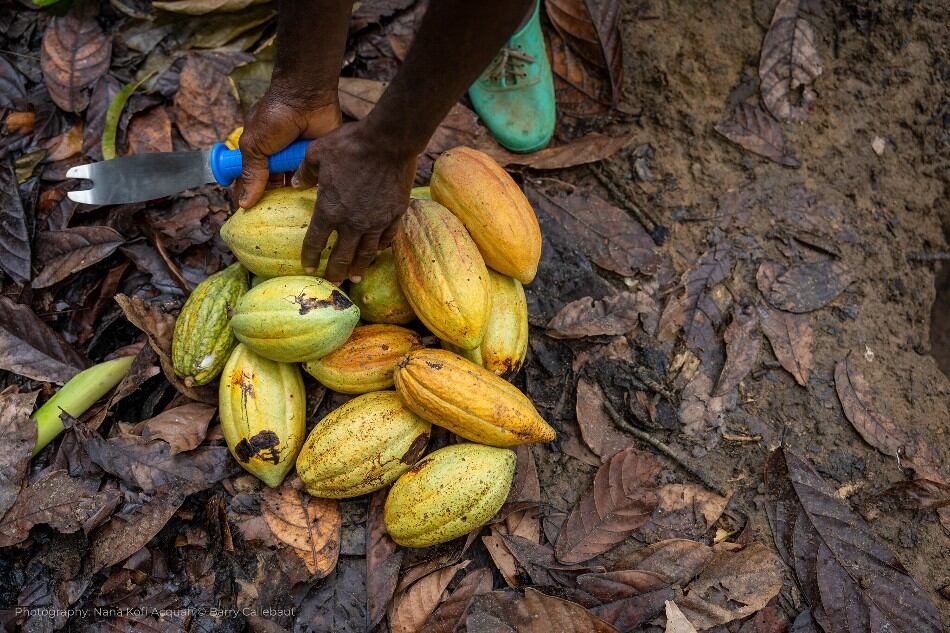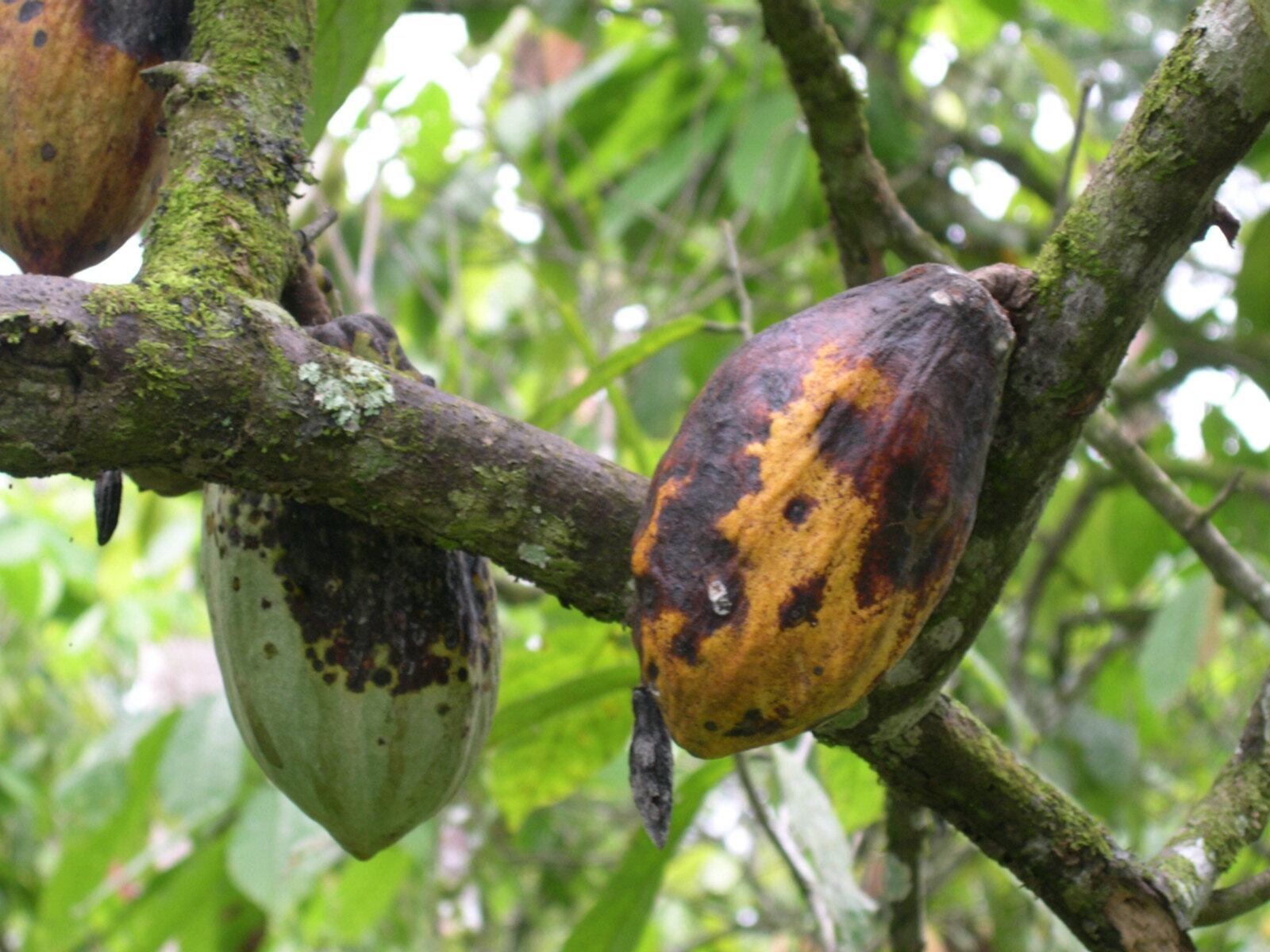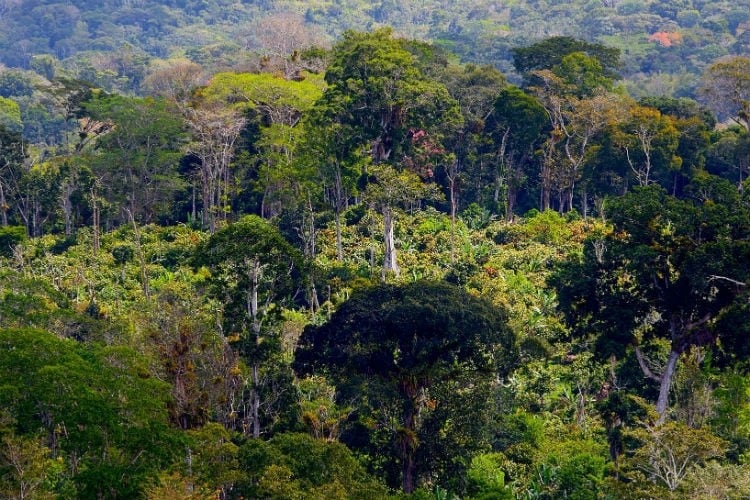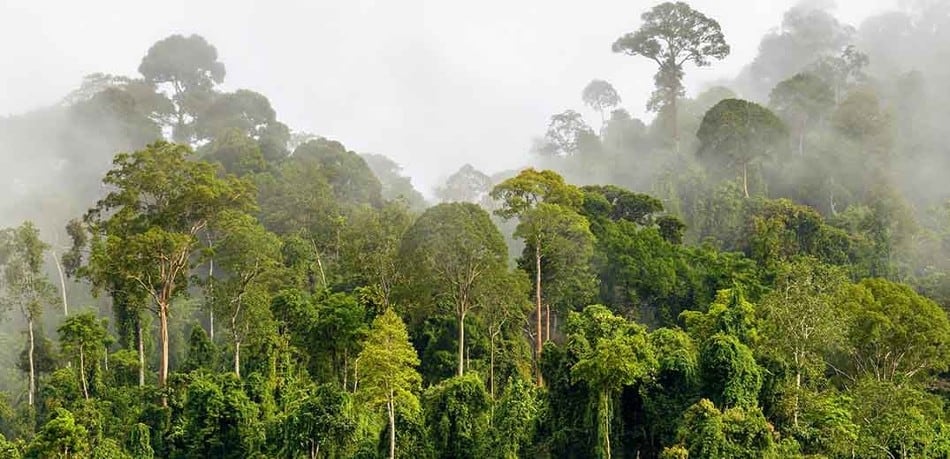A recent study by the Swiss Federal Institute of Technology in Zurich, published in Nature Foods, which maps deforestation driven by cocoa farming across Cote d’Ivoire and Ghana, the world’s largest producers, has discovered official figures underestimate the number of farms in the region, throwing into doubt industry claims on tackling illegal environmental practices.
The findings are backed by studies that suggest Cote d’Ivoire, which accounts for almost 70% of global cocoa production, is thought to have lost more than 90% of its forest cover since 1950 mainly due to cocoa farming, leaving it with only 2.97 million ha of forest, or 8.9% of the country’s land. Ghana may have lost more than 65% of its forests.
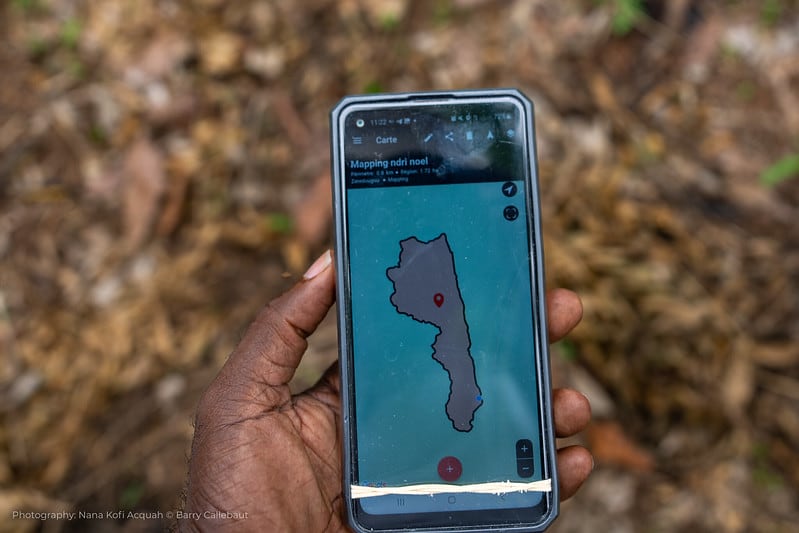
Researchers from the Swiss Federal Institute of Technology in Zurich have mapped deforestation driven by cocoa farming across Cote d’Ivoire and Ghana, which together produce two-thirds of the world’s cocoa.
Using high-resolution satellite imagery and data on known locations of cocoa farms, scientists from the Institute claimed 90% accuracy and revealed 30% of farms in Cote d’Ivoire and 7% in Ghana were planted on what should be protected forest. The researchers highlighted that since 2000, the growing of cocoa has caused more than 37% of forest loss in protected areas of Cote d’Ivoire and 13% of deforestation in reserves in Ghana.
Léonie Bonnehin-Verrier, Head of Cocoa Agroforestry for West Africa, ofi, told ConfectioneryNews: “Six years ago, major cocoa and chocolate companies, including ofi, came together with the governments of Côte d’Ivoire and Ghana and the World Cocoa Foundation with the shared goal of eliminating deforestation and restoring degraded forests. The Cocoa & Forests Initiative (CFI) was born to help drive collective action and investment, from improving traceability to addressing deforestation risks to new government policies, building on existing company efforts to address some root causes.
“But what does the initiative really mean for a cocoa farmer in West Africa? A farmer with only a small plot of land, who is struggling to grow enough cocoa to earn a living income and support their family. Talk of collective action or industry change can often seem remote from the daily challenges that they face.”
White paper
A recent White Paper published by Barry Callebaut, Agri-Logic, IDH and Rainforest Alliance reveals that poverty reduction is driven by three key factors - yield, size of farm and price. Barry Callebaut is one of the world’s largest cocoa suppliers with a significant presence in West Africa and is also a founder member of the CFI.
It said: “The results of the Agri-Logic research provide the foundation for the sharpening of our strategy to support cocoa farmers in achieving higher cocoa yields, increased income and protect the forests surrounding cocoa farms.
“The results form the basis of our shift in approach from less training to more doing - with less emphasis on farmer training and increasing investment to support the farmer with more labour, soil management techniques, and planting material. These findings provide actionable steps that underpin Barry Callebaut’s commencement of a transformative approach to improve the existing cocoa farming model in West Africa.”
The White Paper highlighted that farmers reporting highest cocoa yield in farms are located in regions that received significantly more rainfall (1,699 - 2,500mm), relative to the cocoa region’s average. In contrast, farms located in the centre north and northeast of Côte d’Ivoire received below average rainfall, reported lower yields in these areas.
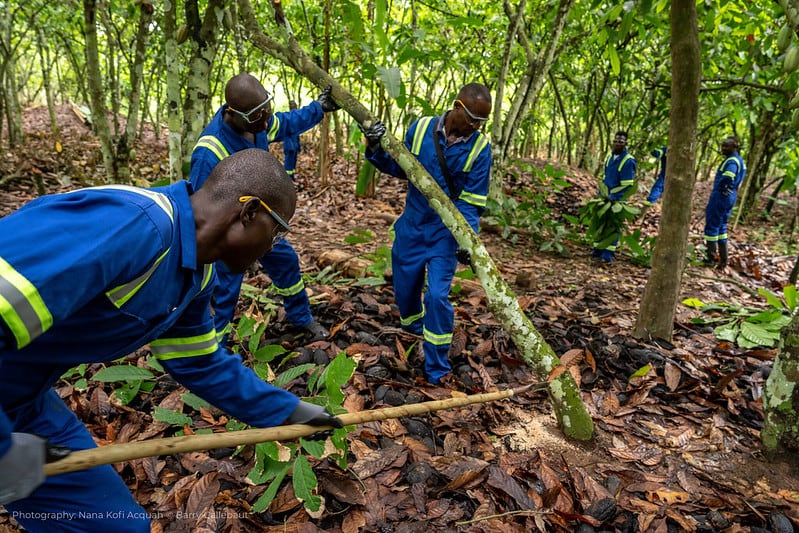
The second finding is the level of farm investment in the form of additional labour and input, such as soil management techniques, also impacts cocoa yield. The data shows the difference between the bottom and the top quintile of investment levels was significant, with the top 20% of farmers collecting nearly double the yield (around 620 kg/ha on average) relative to the bottom quintile, where average yields were a little over 350 kg/ha.
Investment is also a critical factor with regards to farm size, the study found, with analysis showing that larger farm size does not automatically equate to increases in cocoa yield in comparison to smaller farms. This is particularly representative when farm management is undertaken only by the household, without the investment of additional labour. In contrast, a large farm with an adequate level of investment, can drive a higher level of income by more cocoa being grown, resulting in higher yields and subsequently higher reported income.
A picture of farming in Cote d’Ivoire
In Cote d’Ivoire, cocoa is predominantly grown by independent smallholder farmers. According to Agri-Logic data, the average farmer age is 48 years, with an average household size of 10.6 people, or 7.5 people when excluding dependents who may or may not be relatives but are nonetheless dependent on the farm. In Cote d’Ivoire, farms are around 5.12 hectares in size, with an average of 3.61 hectares primarily dedicated to cocoa.
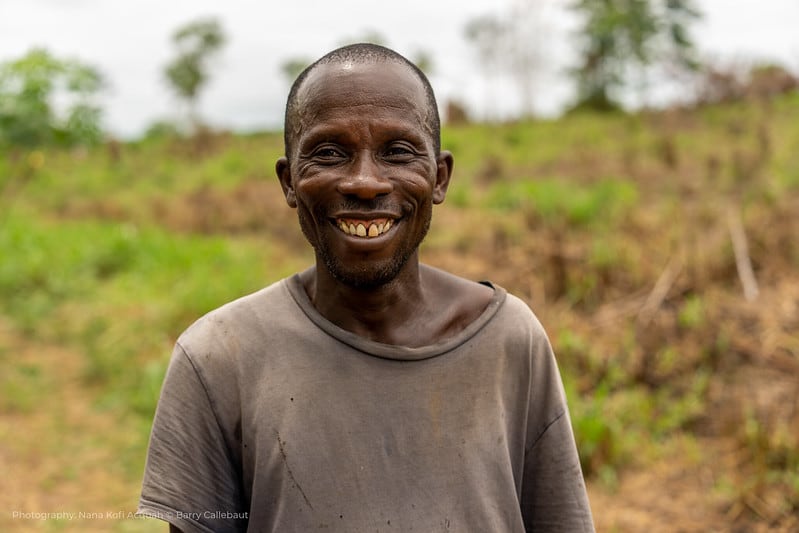
On a recent press trip to Cote d’Ivoire to observe firsthand how Barry Callebaut is working with cocoa communities to tackle sustainability issues in its supply chain as part of its Forever Chocolate programme, ConfectioneryNews met N’dri Yao Noel, a 53-year-old cocoa farmer who supplies beans to the nearby Scapen Divo cooperative, close to Tiassale, where Barry Callebaut buys its beans from.
Noel has seven sons and two daughters and farms a 1.72 HA plot and supplements his income form cocoa by growing banana, cassava and orange trees. His farm is certified under the Cocoa Horizons certification scheme, meaning his land has a polygon reference (GPS Coordinate: 5,924735, -5,065719) which shows it is not in a protected area. As a member of Cocoa Horizons, he also benefits from the sustainability programme with help from agroforestry initiatives such as payment for environment services and help with productivity, packaging and pruning along with loans and subsidies for fertilisers and pesticides.
“In exchange for forest services provided by the saplings that survive, we give farmers cash payments,” said Nicolas Mounard, VP Sustainability and Farming, Barry Callebaut. “We’re moving away from just distributing saplings because we noticed that farmers are reluctant to touch areas that are already dense with trees, and they tend to not be fans of shade because of fungus.”
When ConfectioneryNews visited the farm, there was a ‘labour group’ of 12 men provided by Cocoa Horizons engaged in pruning and other agricultural practices, work that in the past Noel’s children may have had to undertake.
Barry Callebaut says it prefers to work with farm owners like Noel, rather than farmers that have leasing agreements. Before Noel took over the farm, it belonged to his uncle. He said three years ago, before he joined the cooperative Barry Callebaut works with, he produced approximately 300kg of beans. In his last harvest, he produced 420kg of beans, earning more income for himself and his family.
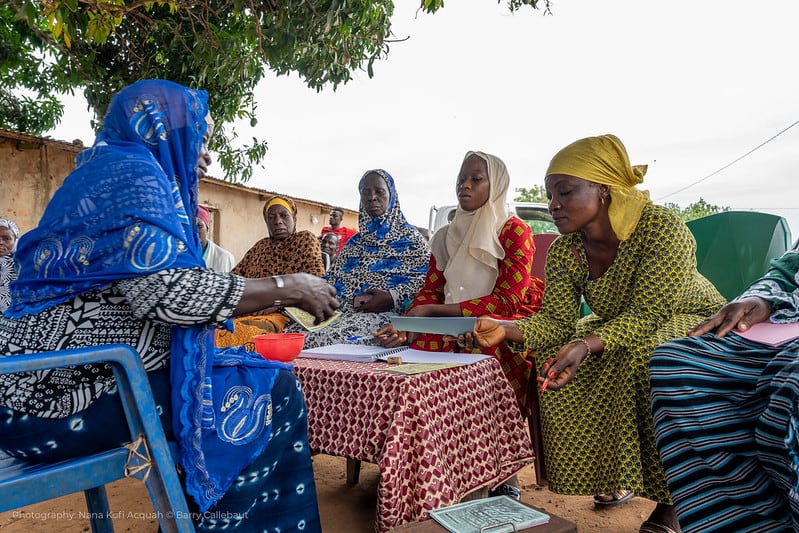
Noel said he joined the Scapen Divo cooperative in 2019, where Barry Callebaut works alongside the organisation Care as a donor and supports the PRODECOM community development project that operates a Village Savings and Loan Association (VSLA) model to create self-managed and self-capitalised savings groups that use members' savings to lend to each other.
As well as developing entrepreneurial skills, the cooperative runs Child Protection Committees and literacy classes to help improve the living conditions of cocoa-producing communities.
Although the work being carried out by Barry Callebaut in communities like the one ConfectioneryNews visited is undeniably having a positive impact on farmers’ livelihoods, the White Paper’s findings advised that systemic change is only possible through the participation of all supply chain actors that are committed to supporting the development of an enabling environment.
“Farm investment is key, said Mounard, “Roughly, a farmer on average will invest somewhere between $80 and $120 per hectare and that's simply not enough. With regards to farm size, bigger farm size matters, but a large farm only managed by the household without additional investment will not lead to higher yields and income.”

